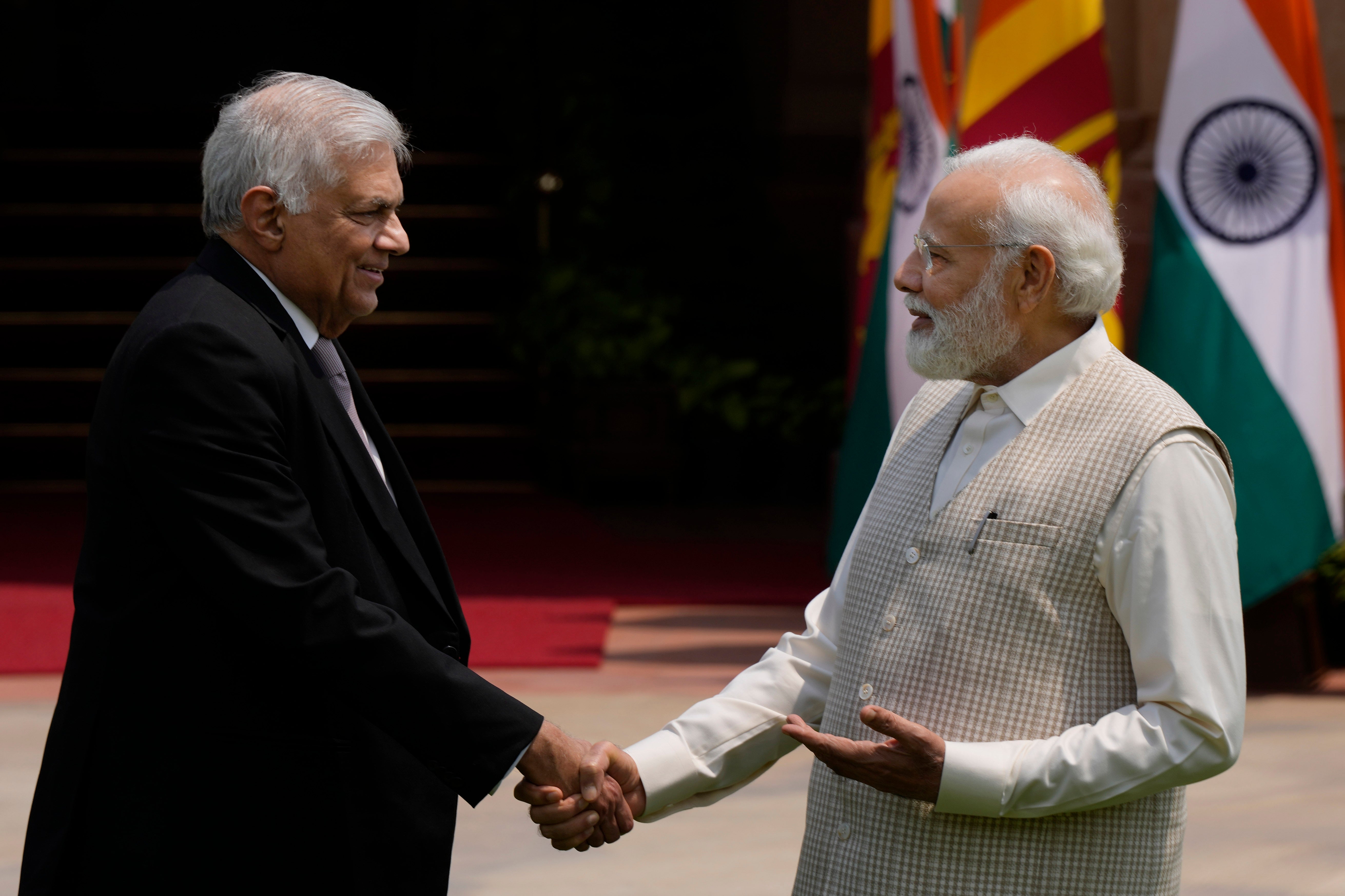Crisis-hit Sri Lanka may allow Indian rupee to be used in local transactions
Sri Lanka is considering the possibility of allowing the use of the Indian rupee to be used in local transactions, as the island nation struggles to build its depleted foreign reserves and to emerge from last year’s unprecedented economic crisis

Sri Lanka is considering the possibility of allowing the use of the Indian rupee for local transactions, as the island nation struggles to build its depleted foreign reserves and to emerge from last year’s unprecedented economic crisis.
Sri Lankan Foreign Minister Ali Sabry said Saturday the move to allow the use of its giant neighbor's currency would enable “tourists and other people from India to directly use Indian rupees here” without going through the hassle of multiple currency conversions.
Sri Lanka imports plenty of items from India — its largest trading partner — including food, pharmaceuticals, construction materials, automobiles, fertilizers and chemicals. Trade between the two nations stood at $5.45 billion in 2021, according to official figures.
Sabry said accepting the Indian rupee would work as an advantage for Sri Lanka as the trade imbalance between the two countries is in favor of India.
“We need more Indian currency, so more Indian people coming here and spending Indian currency is good for us," Sabry told reporters a day after visiting India with Sri Lankan president Ranil Wickremesinghe.
During the visit, India and Sri Lanka signed a series of energy, development and trade agreements, signalling growing economic ties between the neighboring countries.
Relations between the two countries surged last year when Sri Lanka was mired in its worst economic crisis in modern history, triggered by a severe foreign currency crunch that saw essential items run out and citizens queue for fuel for days. It also suspended its repayment of foreign debt last year.
India provided critical financial and humanitarian assistance worth over $4 billion to its neighbor, including food, medicine and fuel.
India was also the first creditor to extend a letter of support towards Sri Lanka’s debt restructuring efforts that helped kickstart support from the IMF, which approved a $3 billion bailout package in March.
Sri Lanka’s total debt has exceeded $83 billion, of which $41.5 billion is foreign and $42.1 billion is domestic. Sri Lanka has now started the process of restructuring it’s debt.
Sri Lanka’s strategic location in the Indian Ocean has long attracted attention from regional rivals India and China. For years, free-flowing loans and infrastructure investments from Beijing helped it gain an upper hand against New Delhi in the quest for influence.
But the country's economic collapse gave New Delhi an opportunity to swing the pendulum back in its favor, especially as China delayed its support for debt restructuring, experts say. China owns about 10% of Sri Lanka’s foreign debt.
Bookmark popover
Removed from bookmarks